While there are some impressively light and compact hiking tents around today (some one-person tents weigh in at around one kilogram), you can do even better with a bivvy bag.
Spacious they are not, but a well-designed bivvy bag provides an excellent little sleeping pod to use during your overnight outdoor excursions. They should be just big enough to fit you and your sleeping mat, with maybe even a reasonably sized hiking backpack at your feet.
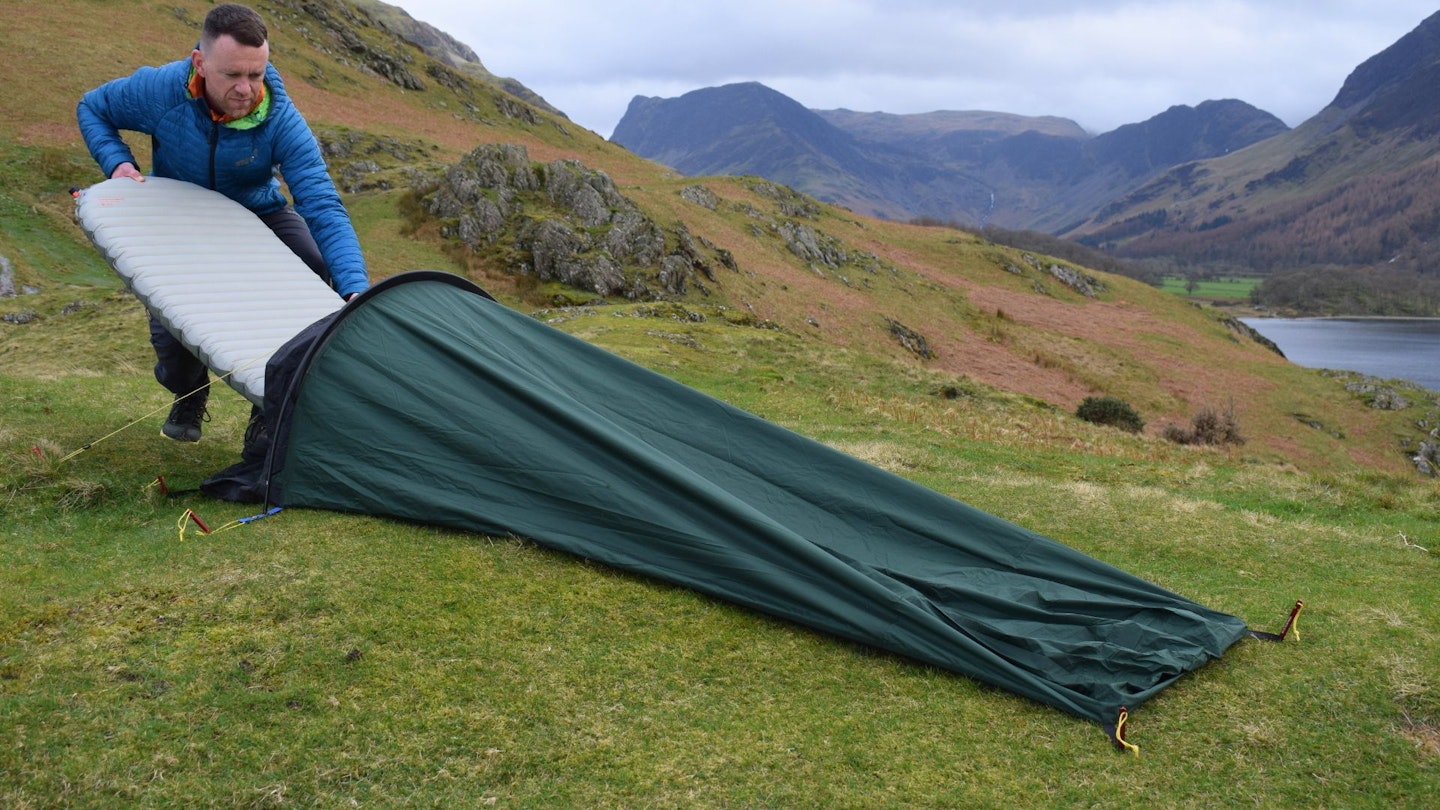
What are the best bivvy bags of 2025?
Best in Test: Outdoor Research Helium Bivy
Best value: Alpkit Hunka XL
Best premium bivvy: Rab Ridge Radier Bivi
The bivvy bag market isn't as extensive as tents, largely due to them being reasonably niche. There are, however, still a solid range of dependable options.
Some bivvy bags are very uncomplicated, consisting of weatherproof outer material and not much more. These are the lightest and usually least expensive options but others occupy a space between tent and bivvy bag, often with a hooped pole over your head. These offer more internal space, but are a bit heavier and more expensive. In this guide, we cover the best bivvy bags of all types and budgets.
How we tested the best bivvy bags

The selection of bivvy bags you'll find below were all tested alongside one another by our British wild camping and backpacking enthusiast James Forrest.
The outdoor kit we review is usually tested as a group test in order to directly compare rivals in real world conditions. James is arguably our most dedicated wild camper, and that's quite a feat because the LFTO team is made up of some very keen trekkers and backpackers. It's what we do.
What we look for in bivvy bags is an ability to nail the core aspect of a basic shelter: weather protection. To us, bivvies don't need to be fancy but they do need to be effective. We also compare levels of quality, packability, space, and comfort.
The best bivvy bags reviewed:
Over the years this bivvy bag has become to be our benchmark against which we measure rivals. It does pretty much everything right: it's lightweight yet highly weatherproof; it's spacious yet compact; it's fully featured but not outrageously expensive.
For the avid minimalist camper, the Outdoor Research Helium is ideal.
Managing to weigh less than 500g for a hooped bivvy bag is quite impressive, especially when it has class-leading waterproofing and breathability ratings. To help with stability, it also includes two diagonally positioned pegging points (pegs aren't included).
Inside, the hooped design provides a relatively generous space in which you can move and organise yourself quite easily. That said, for very tall people it might feel a tad restricitve.
Read our full Outdoor Research Helium Bivy review
Pros
- Protective
- Versatile
- Lightweight for hooped design
- Better waterproofing and breathability than most rivals
- Surprisingly durable
Cons
- Not as roomy as some rivals
- Some rivals have superior eco credentials
| Weight | 494g |
| Packed size | 31 x 9cm |
| Dimensions | 208 x 66cm (shoulder)/48cm (foot) |
| Main material | Bluesign-approved 30D nylon 2.5-layer Pertex Shield Diamond Fuse (40D nylon floor) |
| Waterproof rating | 20,000mm HH |
| Breathability rating | 20,000g/m²/24 hour |
Fans of the simple, pole-free bivvy design can't do much better than the Alpkit Hunka XL.
As far as features go, there aren't many. There are no zips, just a drawcord around the hood; the other notable 'luxury' is a mesh pouch at the foot of the bag for storing gear.
But in terms of quality and performance, this is a great bivvy bag. The main fabric is recycled and PFC-free, and has a high waterproof rating of 20,000mm HH. It's breathable too (although not class leading).
The fabric is certainly capable of dealing with rain but the hood can't be fully closed so the Hunka XL is never fully weatherproof. For those in need of a fully enclosed bivvy, we'd recommend a design with a hooped pole rather than the Alpkit Hunka XL.
XL is in reference to size, which (you guessed it) is larger than the standard Hunka. It's great that there are two sizes (and three colours) to choose from.
Read our full Alpkit Hunka XL review
Pros
- Fantastic value
- Lightweight
- Compact
- Unfussy and minimalist
- Quite sustainable
Cons
- Can't be fully sealed up
- No zipper
| Weight | 482g |
| Packed size | 23 x 16cm |
| Dimensions | 235 x 98cm (shoulder)/72cm (foot) |
| Main material | Recycled and PFC-free 30D 2.5-layer nylon |
| Waterproof rating | 20,000mm HH |
| Breathability rating | 10,000g/m²/24 hour |
Bivvy bags are supposed to be the camping minimalist's tent but despite this, some models can be astonishingly expensive. Particularly those with a hooped pole.
Mercifully, the Lifesystems Venture Solo bivvy is on hand to help address this issue. At £120 (at the time of writing), it's a welcome addition to the lineup of hooped bivvies costing upwards of £200.
Is it any good? We thought so. The Venture Solo is very similar to the Best in Test Outdoor Research Helium in terms of design, while even managing to offer slightly more interior space. We liked its relatively tough 70D material too, it makes the Lifesystems bivvy feel reassuringly durable.
Although the material is relatively thick, the Lifesystems bivvy still packs down to about the same dimensions as the Outdoor Research Helium. It is, however, noticeably heavier, weighing around 200g more. Nor can it match the Outdoor Research bivvy for waterproofing and breathability.
Read our full Lifesystems Venture Solo Hooped Bivi review
Pros
- Great value for a hooped bivvy bag
- Fully featured
- Weatherproof and breathable
- Durable fabric
Cons
- Heavier than premium Outdoor Research Helium Bivy
| Weight | 681g |
| Packed size | 33 x 10cm |
| Dimensions | 225 x 68cm (shoulder)/59cm (foot) |
| Main material | 70D nylon |
| Waterproof rating | 11,000mm HH |
| Breathability rating | 15,000g/m²/24 hour |
The Terra Nova Jupiter Lite bivvy bag is an interesting one. It offers excellent stability thanks to six pegging points (pegs are included), two guy lines, and high quality materials. As one expects from Terra Nova, this is a very high quality product too and built to last. Where this is most noticeable is the pole. It's aluminium alloy instead of the plastic used on the Outdoor Research and Lifesystems bivvy bags.
However, it occupies a middle ground in other aspects. It's light enough, but the Outdoor Research Helium is lighter. It's waterpoof and breathable, but the OR Helium is more so.
Internal space is pretty generous. The pole gives the Jupiter Lite a ceiling height of over 50cm; it's reasonably long and wide too.
All in all, if you appreciate quality and longevity, this is probably the bivvy for you. It's a joy to use and camp in. But, there are lighter options out there if that's what you desire.
Read our full Terra Nova Jupiter Lite Bivi review
Pros
- Stable, durable construction
- Pegs included
- Relatively spacious
Cons
- Some rivals have higher waterproof and breathability ratings
- Heavier than some rivals (but still far from bulky)
| Weight | 580g (excl. pegs) |
| Packed size | 36 x 11cm |
| Dimensions | 230 x 70cm (shoulder)/45cm (foot) |
| Main material | 15D Moonlite ripstop nylon (groundsheet: 70D Waterbloc nylon) |
| Waterproof rating | 10,000mm HH |
| Breathability rating | 15,000g/m²/24 hour |
The Trailhead Bivi is Rab's least expensive and most simplistic bivvy bag.
On test, we found it ticks most of the boxes for a basic bivvy bag. Its materials are reliably waterproof and breathable; comfort is good with enough room for our gear and even some wiggle room leftover; it's reasonably lightweight and packs down very small; and it's quite durable.
It competes squarely with the Alpkit Hunka XL but loses out to it in terms of price. At over £100, the Rab bivvy is a tad expensive for a basic design. Granted, Rab is a reasonably sustainable brand as that is worth paying a premium for, but Alpkit is a responsible outdoor brand too and still manages to offer a model for £40 less.
Read our full Rab Trailhead Bivi review
Pros
- Minimalist design
- Button closure
- Durable
- Quite protective and waterproof
- Rab scores well on sustainability
Cons
- Pricey for a minimalist bivvy
- Can't be fully sealed
| Weight | 450g |
| Packed size | 20 x 12cm |
| Dimensions | 250 x 85cm (shoulder)/60cm (foot) |
| Main material | PFC-free 40D nylon |
| Waterproof rating | 10,000mm HH |
| Breathability rating | 10,000g/m²/24 hour |
This Mountain Warehoue bivvy is the most affordable option we tested and by some margin. In addition to the very attractive price tag it has some other enticing aspects such as a very low weight and packed size. It has decent internal space and volume too, with ample space for a sleeping bag, sleeping mat, and space for your pack at your feet.
But, predictably, we did find this bivvy is rather limited in its performance. The fabrics and components don't feel especially durable and it also lacks the reliable waterproofing that the other options on test have. It's rated at just 3000mm HH, and can only fend of some spits of rain rather than any substantial rain.
So, if you are keen to try out the bivvy experience, and don't want to invest too heavily, or are solely a summer time camper, this might be the option for you. But we would suggest, for those who go more frequently, to choose the superior Alpkit Hunka XL.
Read our full Mountain Warehouse Waterproof Bivvy Bag review
Pros
- Very affordable
- Ultralight and packable
- No frills design is quite refreshing
- Adjustable hood
Cons
- Much lower waterproof rating that most rivals
- Not partiuclarly durable
| Weight | 363g |
| Packed size | 25 x 10cm |
| Dimensions | 246 x 83cm (shoulder)/50cm (foot) |
| Main material | 63D polyester |
| Waterproof rating | 3,000mm HH |
| Breathability rating | Not provided |
This is a regular feature in any of our bivvy roundups, and with good cause. Freestanding and less claustrophobic than a typical bivvy thanks to its hooped main pole and micro upright pole at the foot, it’s made from Pertex Shield Air fabric, which is both waterproof and breathable (HH of 15k and an MVTR of 20k), keeping you dry and reducing condensation. The zipped entry provides easy access and has a mosquito mesh door.
It’s not as compact and lightweight (or as low priced) as a bivvy bag, nor as roomy and liveable as a tent, but it offers an excellent compromise between the two, opening up a world of overnight adventure opportunities.
Pros
- Spacious
- Freestanding
- Great weather protection
Cons
- Not as lightweight as pole-less bivvies
| Weight | 890g |
| Packed size | 32 x 15cm |
| Main material | Pertex Shield Air 3-layer 15D ripstop nylon |
| Waterproofing | 15,000mm HH |
| Breathability | 20,000g/m²/24 hour |
What to look for in a bivvy
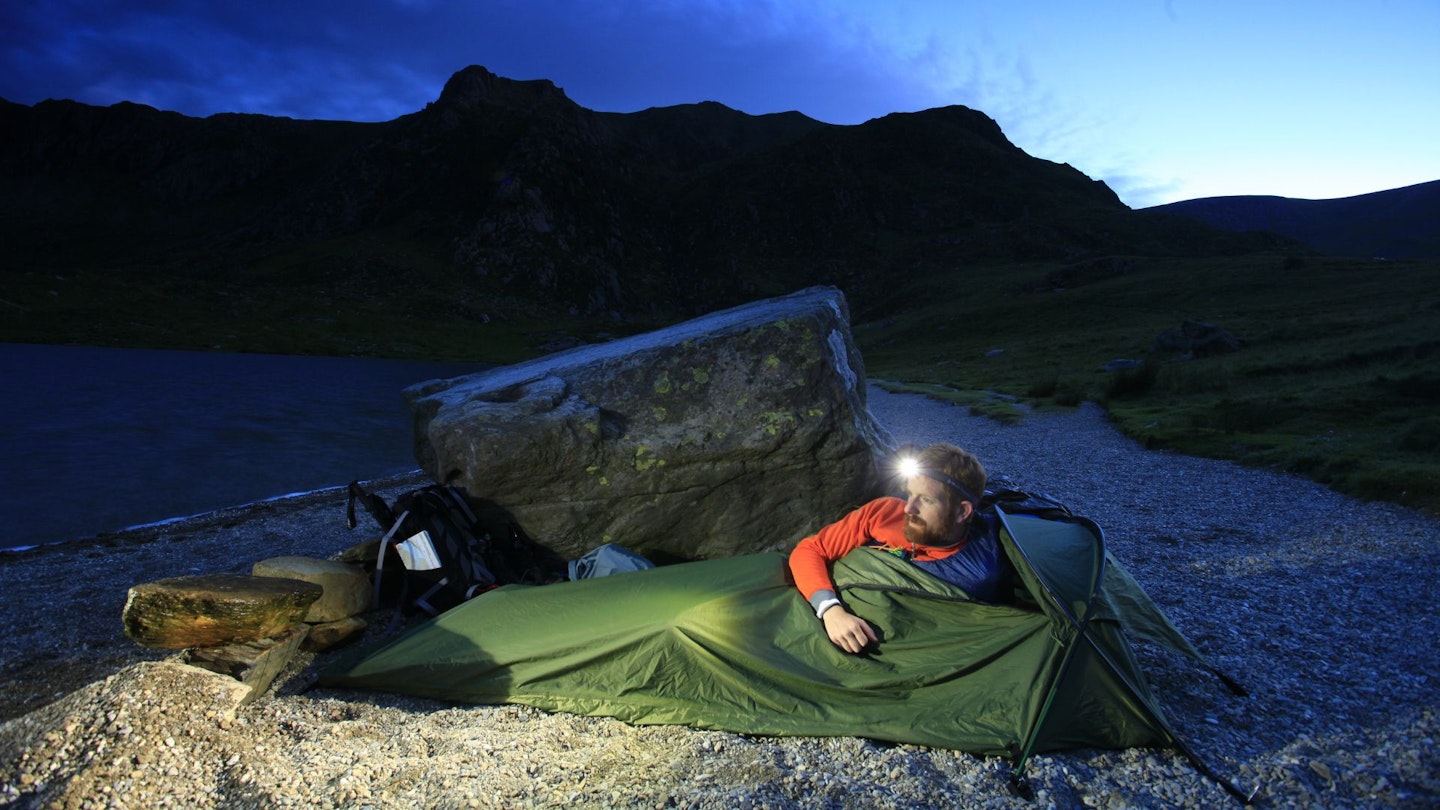
Are there different types of bivvy bag?
The most basic bivvy is a waterproof sack that goes over your sleeping bag and sometimes your sleeping mat. Some people find this set-up cramped, claustrophobic, and a little like a body bag, so prefer poled bivvies. These use short poles to lift the canopy – usually over your head – and make the interior feel a bit more spacious.
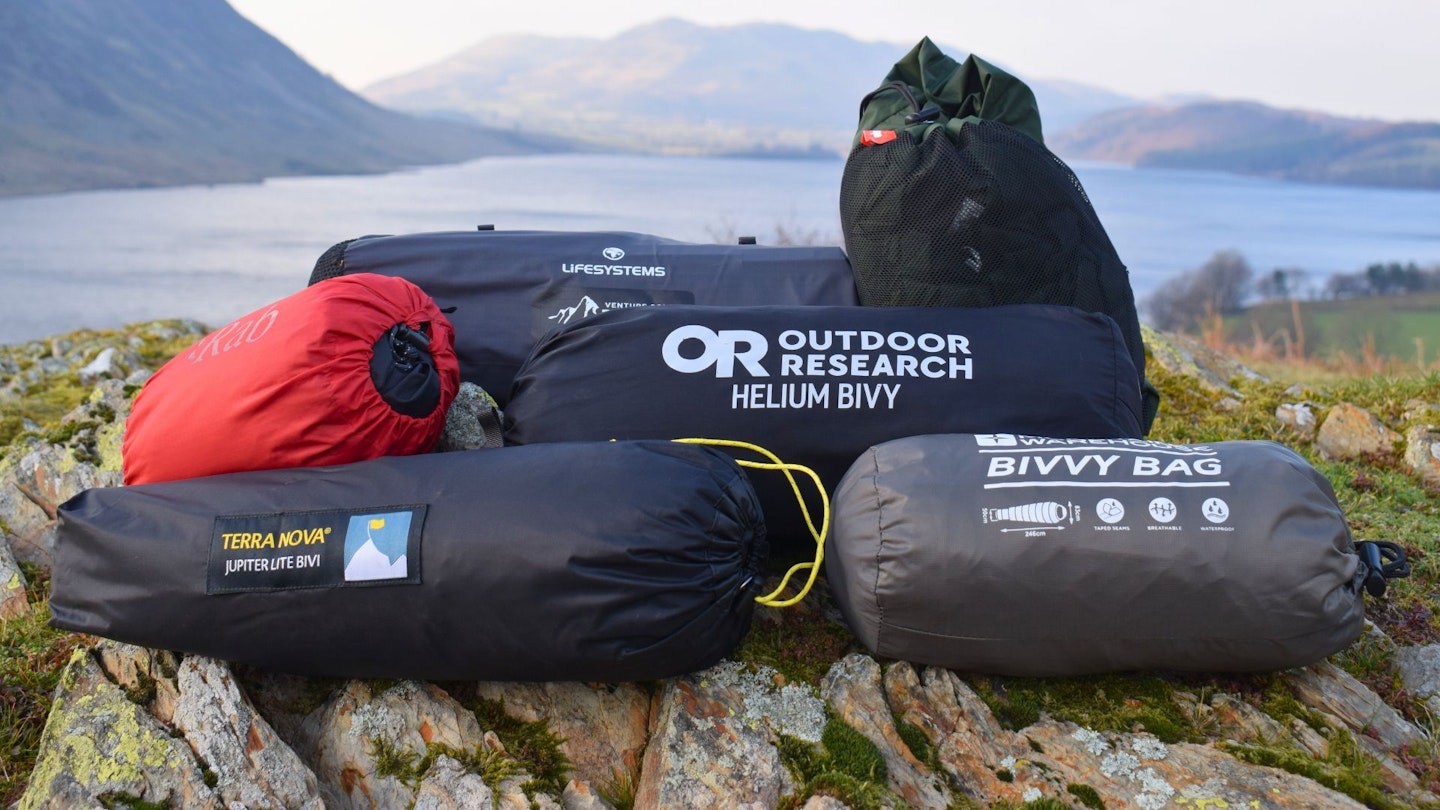
How much should a bivvy bag weigh?
The bivvy is the spork of the tent world. It's compact and lightweight. Yet, the weight of a bivvy can vary dramatically depending on the material it’s made from and whether it requires poles. You’ll need to consider which is most important: light weight and packability, or comfort and protection.
Are all bivvy bags waterproof?
A bivvy should prevent you and your kit being soaked by rain or the ingress of moisture from the ground, so the fabric must be waterproof. However, their single skin construction makes it difficult to prevent condensation on the inside, so the fabric should be breathable too. If provided, check out both the Hydrostatic Head (waterproof) and Moisture Vapor Transmission Rate or RET (breathability) figures of the fabrics – the higher the HH and MVTR numbers the more waterproof and breathable the fabric.
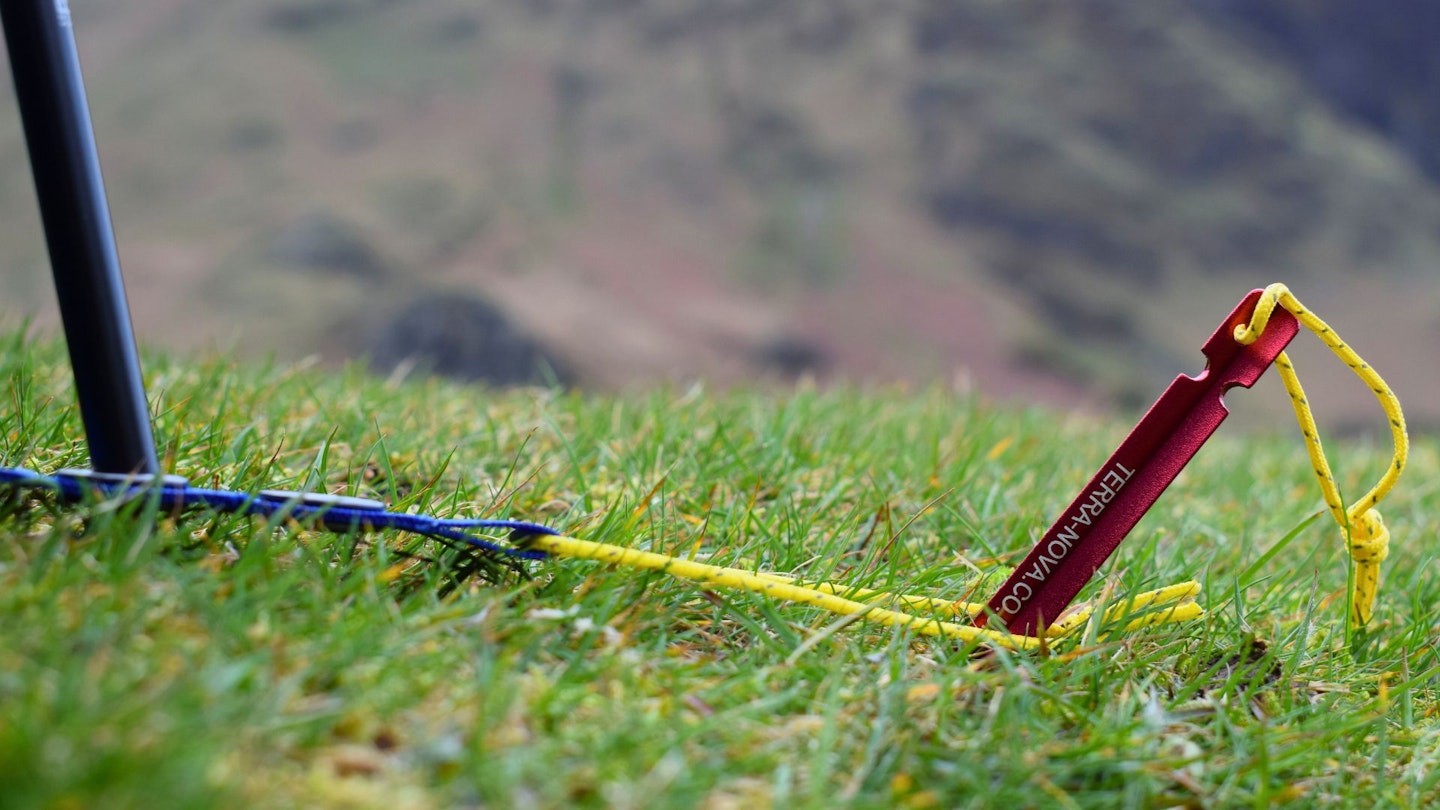
What features should I look for?
Opening: While most bivvies can be sealed completely with a zipper, and some have a mesh panel that allows ventilation without letting in bugs, some cheaper bivvy sacks cannot be completely closed, leaving an opening around the face.
Pegging points: Tents are pegged into the ground for stability, and some (but not all) bivvy bags can be too. Ranging from just two up to six or so pegging points, this is a useful feature to look out for if you know you'll need the additional stability.
Bivvy or tarp: which is the best lightweight shelter?
It depends what you're after here. An open-air, uber lightweight option is the tarp. A bivvy (particularly a fully enclosed bivvy) gives you more protection both from the elements and the bugs.
Many people like to pair the two together to improve weather protection but still have that sleeping in the open experience.
About the author
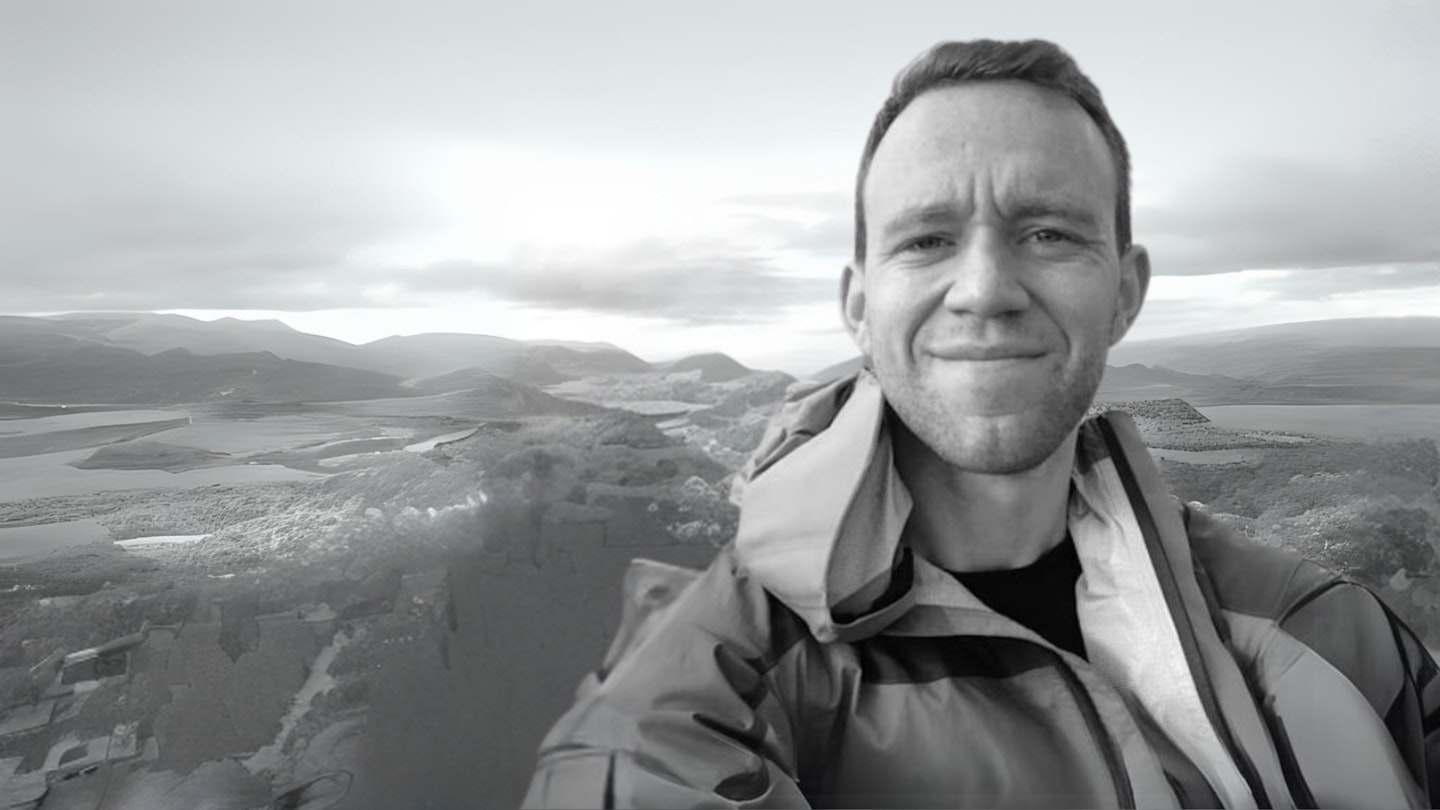
James Forrest is a prolific peak bagger and long-distance walker who’s one of the most high-profile outdoor writers in the UK.
He writes regular features and route guides for Trail and has been one of our main gear testers for the last few years. James is based on the edge of the Lake District so when he isn’t off on his latest crazy adventure or challenge, he’s walking in his local fells.
James reviews every type of outdoor kit for Trail and is a real authority on everything you need for wild camping and packing light for a multi-day walk.





























